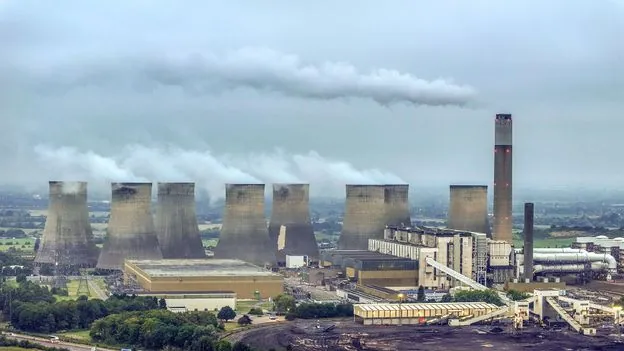
From Coal to Clean Energy: The UK’s Vision for a Battery-Powered Future
2024-09-30
From Coal to Clean Energy: The UK’s Vision for a Battery-Powered Future
With the impending closure of the UK's last coal-fired power station, a remarkable transformation of fossil fuel infrastructure is underway, offering a glimpse into a sustainable future. Ratcliffe-on-Soar power plant, situated in Nottinghamshire and operational since 1967, will officially shut down its turbines on September 30, 2024, marking the end of an era and the UK’s transition to a renewable energy landscape.
For generations, coal has been synonymous with British industrial power, fueling steam engines and powering homes. In the 1960s, nearly 90% of the UK's electricity was generated from coal. However, as the country strides towards decarbonisation and aims for net-zero emissions by 2050, a seismic shift is taking place—soon, the UK will rely entirely on cleaner sources of energy.
The most pressing question now is how to repurpose defunct coal plants such as Ratcliffe-on-Soar. One promising avenue is transforming these sites into battery energy storage systems (BESS), crucial for addressing the intermittency of renewable energy sources like wind and solar. Unlike traditional power plants that can generate electricity on demand, renewable sources fluctuate and require a reliable method for energy storage.
Experts like Grazia Todeschini from King’s College London emphasize the importance of managing this intermittency. With increasing investment in energy storage technologies, old coal power sites are being revitalized for this purpose. At Ferrybridge, West Yorkshire, SSE is initiating the construction of a robust 150-megawatt BESS on the site of a former coal station, expected to power around 250,000 homes by early 2025.
But why BESS? The answer lies in their ability to store excess renewable energy for later use. As the renewables sector continues to grow—with projections showing renewables generating 33.5% of global electricity in 2024—energy storage will be pivotal. Currently, the UK has just 4.7 gigawatts (GW) of battery storage capacity, a figure that needs to soar to between 29 GW and 36 GW to meet future demands.
Globally, other nations are exploring similar paths. Germany’s LEAG energy company plans to metamorphose its lignite coal operations into a “green energy hub” by 2040. Meanwhile, Australia’s Liddell Power Station is being converted into a massive 500-megawatt battery facility.
The transition from fossil fuels to energy storage systems is not just an environmental necessity; it offers a remarkable opportunity to reuse existing infrastructure. Projects are already in motion, as SSE is now embarking on repurposing the former Fiddler's Ferry coal station into another BESS facility.
As more projects like these come online, industry experts anticipate enhanced efficiency and reliability in energy storage systems, ensuring stable electricity supplies as the UK moves deeper into its carbon-free future. The age of coal may be drawing to a close, but with clarity of purpose and innovative thinking, the country is set on a path to become a global leader in renewable energy storage.
Stay tuned as this significant energy revolution unfolds—who knows how it may transform the landscape, economies, and the environment in the coming decades!




 Brasil (PT)
Brasil (PT)
 Canada (EN)
Canada (EN)
 Chile (ES)
Chile (ES)
 España (ES)
España (ES)
 France (FR)
France (FR)
 Hong Kong (EN)
Hong Kong (EN)
 Italia (IT)
Italia (IT)
 日本 (JA)
日本 (JA)
 Magyarország (HU)
Magyarország (HU)
 Norge (NO)
Norge (NO)
 Polska (PL)
Polska (PL)
 Schweiz (DE)
Schweiz (DE)
 Singapore (EN)
Singapore (EN)
 Sverige (SV)
Sverige (SV)
 Suomi (FI)
Suomi (FI)
 Türkiye (TR)
Türkiye (TR)